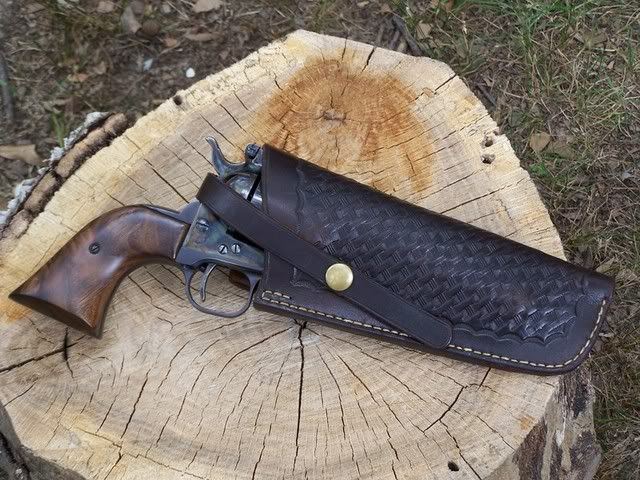Elmer Keith talked about all of those things, including getting the right fit for a holster. I'm not sure but I think he preferred modern things.
Yep, Keith was on the cutting edge. Heck I think he's the one that originally sharpened it.
Elmer Keith talked about all of those things, including getting the right fit for a holster. I'm not sure but I think he preferred modern things.
I can tell you based on personal experience that anyone willing to stand in the street face to face and then draw to see who's fastest is an idiot. As soon as you realize you're going to be in a gunfight your gun ought to be in your hand.
This is for when the revolver is holstered. A narrow strap goes under the hammer, the firing pin fitting into a hold in the strap. It both holds the revolver securely in the holster but it safely allows six rounds to be loaded. Since the practice at the time was to cock the hammer on drawing the revolver, it would immediately release the revolver, at least he said it would. It actually sounds better than one of those rawhide thong loops over the hammer.

The holster Mr. Haggen has kindly illustrated is more historically accurate, at least for the period before WWI, but I doubt many were lined.
